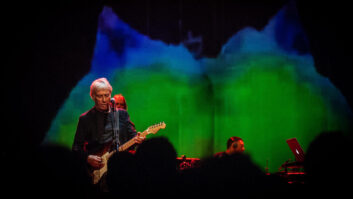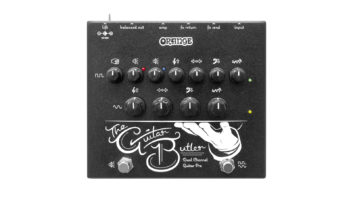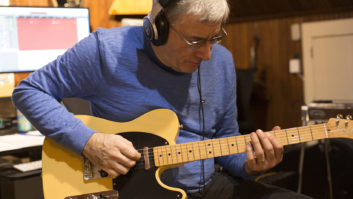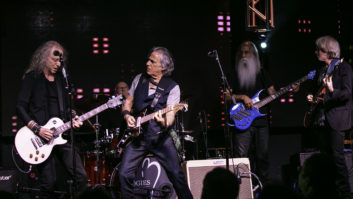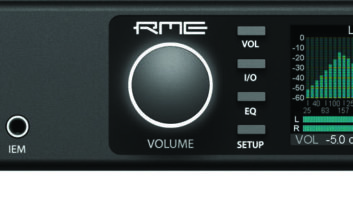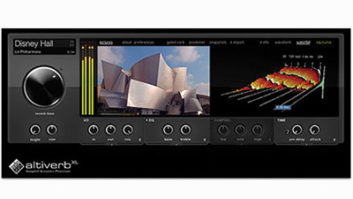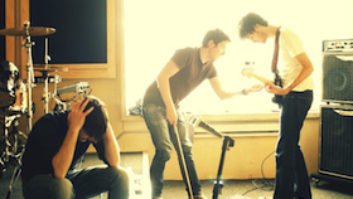
Loopified, the title of Dirty Loops’ debut album, might seem like just a clever play on words from a label marketing department, but it means much more to the band. To them, it’s the past tense of the verb “to loopify,” which the three musicians coined to explain the musical process they employ to make the music that has exploded out of their home in Sweden and popped up around the world.
Lead singer/keyboardist and predominant producer of their debut Jonah Nilsson, 27, says the actual process occurred accidentally and naturally when three friends—Nilsson, drummer Aron Mellergårdh and bassist Henrik Linder—from music school started “playing around” with covers.
“I just took a tune and reharmonized the chords and did some fun things with the melody at the first rehearsal,” Nilsson says. “Then we just became more and more nerdy about it.”
When Lady Gaga’s “Just Dance” went nuts on YouTube, they realized they had something. So did David Foster, who decided to sign them to Verve Records after Andreas Carlsson, who runs the Academy of Music and Business School in Sweden, discovered the band on YouTube in 2011 and brought them to his attention.
“People thought I was out of my mind for signing a jazz band,” Carlsson says. “These were three guys from school who didn’t know how to write a song. Then you hear them and they are so unbelievably great that Chicago, Quincy Jones, Toto and Stevie Wonder are in awe—it has the technical dance element and everything that is new and of their generation and is so musically great.”

The unique sound comes from the “playing around,” as Nilsson put it.
Describing the process, Nilsson says: “First of all, we strip the whole song down so the only thing you have left is melody. You just listen to the melody, don’t think about the chords, don’t think about the present arrangement, only think about the melody. Don’t sit with your instrument, don’t sit in front of anything. Just sit with yourself and try to create a vision in your head of what could happen.
“After that, you just talk about it,” he continues. “‘Maybe we could have a bass line that goes here,’ or, ‘Take that part and put it first,’ those kinds of things. If you find a tempo that you would like to do it in, more rhythmic-wise, then you start to figure out a little bit of chords and see if you can get something going. That’s the biggest process. Creating the whole vision of the song, how everything is built up, structure and everything, that’s done first. Then when we have everything, how it’s going to sound, then we record the drums.”
Then Nilsson sits at the keyboard, his main one being a Korg X50. For most songs he typically uses three or four presets and creates a few of his own; his main piano sound is “Ballad Layer.” He completes the chord structure and arrangement, then records the keyboards and synthesizer parts, as well as a rough vocal.
“Last, but not least, we record bass,” Nilsson says. “I don’t know why that’s the process, but it’s become an important part of our glue. We leave a lot of space for that, like in ‘Lady,’ for example. Then all three of us together, with Henrik, will come up with rhythms and notes, so everything is very precisely arranged when we record it so we have 100-percent control.”
They recorded most of Loopified in Stockholm’s X-Level Studios (except for a few vocals and a horn section in L.A., headed by Jerry Hey). Foster and Carlsson executive produced and Carlsson served as lyricist and mentor.
Nilsson says his favorite vocal mic was a Brauner Valvet. “It’s not making the voice sound any different,” he says. “It doesn’t put any color to the voice, it makes it sound natural. I recorded all the vocals by myself. I took my computer keyboard into the vocal booth and pressed record from in there. I recorded all the synthesizers and chose all my sounds, all the extra sampled percussion things I chose myself. Henrik recorded all the bass himself.”
Drums were recorded through a Neve VR Legend 48 into Pro Tools at Soundtrade Studios in Solna, outside of Stockholm, by Ronny Lathi, who Carlsson calls the “da Vinci of drum miking in Sweden.”

“I used different kinds of microphones in different occasions, but for the kick drum I think I used a Shure Beta 52 and a Manley Ref Cardioid Mic—lying on the floor just outside the kick drum,” Lathi explains. “For the snare drum I used a Shure SM57 and an Electro-Voice PL10, which were taped together—the 57 was distorted through an old Spectra Sonic comp-limiter. On the hi-hat it was a Schoeps. For the toms, I used Sennheiser 421s with sub mics under each of them. For overheads I used a couple of Swedish mics called Ehrlund EHR-M, with the triangular capsule placed maybe 24-28 inches over the crash and ride cymbals.
“I also used Coles 4038 ribbon mics, placed one under the drum chair and one overhead maybe 40 to 50 inches facing the snare drum and toms. I’m not sure if they used them in the mix, though. Finally, for room mics I used two Neumann U 87s about 9 to 13 feet from the kit and approximately 9 feet from each other.”
Nilsson is pleased how the album turned out, but it did take three years to complete because there was some trial and error. Some of their original compositions weren’t up to par, so Foster sent them back to the drawing board with excellent advice: He told Nilsson to go back and do what they do to all their covers—loopify their originals.
“Everyone had wanted to do things a certain way and we had compromised ourselves in a way we should not have done,” Nilsson confesses. “Then David heard it and he said, ‘What are you doing? You should do exactly what you are good at. This sounds like an ordinary pop song. Go back and re-do this.’ We loopified the songs and then he loved it.”
Hence the name of the album and realizing the challenge of staying true to themselves as a young band, while fitting in.
“It had started to get big and we began to listen to people who had a lot to say, who had a big name in the business” Nilsson admits. “We were three nerds from Sweden and we just jumped into this big world and we were scared out of our minds. But now we know we just have to do what we do.”
